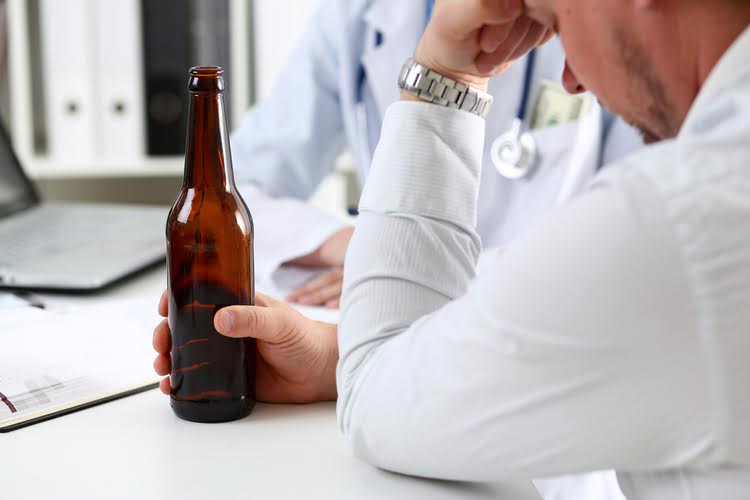Content
In addition to the counseling provided in outpatient and inpatient alcohol treatment programs, self-help groups and certain drugs may help prevent relapse in some patients. Thanks to years of research, doctors and health professionals now have a full menu of options to treat alcohol use disorders. Building on this progress, scientists continue to work on new medications and discover new ways to improve the effectiveness, accessibility, quality, and cost-effectiveness of treatment for people who have alcohol use disorders. Many people with alcohol problems and their family members find that participating in support groups is an essential part of coping with the disease, preventing or dealing with relapses, and staying sober. Your health care provider or counselor can suggest a support group.
What is the number one killer of alcoholics?
Since the death toll caused by alcohol abuse is so high, it is important to understand the ways in which alcohol can kill someone. The major causes of alcohol-related death are alcohol poisoning, cancer, car accidents, heart failure, liver damage, and violence.
The use of intravenous alcohol infusions continues in some locations [62], mainly in surgical specialties, due to some surgeons’ familiarity and comfort with this treatment. According to the National Institute on Alcohol Abuse and Alcoholism (NIAAA), nearly 14 million Americans (1 in every 13 adults) abuse alcohol or are alcoholics. Several million more adults engage in risky drinking patterns that could lead to alcohol problems. The costs to society in terms of lost productivity, health care costs, traffic accidents, and personal tragedies are staggering. Numerous studies and reports have been issued on the workplace costs of alcoholism and alcohol abuse, and they report costs that range from $33 billion to $68 billion per year. Alcohol is a major factor in injuries, both at home, at work, and on the road.
Alcohol Testing
Drugs used for other conditions — like smoking, pain, or epilepsy — also may help with alcohol use disorder. Talk to your doctor to see of one of those might be right for you. You doctor also can refer you to a treatment center or experts who can help. An important first step is to learn more about alcohol use disorder and your treatment options. You and your doctor will decide how long you should take naltrexone.

Importantly, as for any ordinal screening instruments, different cutoff scores will result in a tradeoff between sensitivity and specificity. In addition, relatively low cutoff scores on an instrument that assesses both the magnitude of drinking and alcohol-related consequences can be used to screen for unhealthy alcohol use and alcohol use disorders (e.g., as with the AUDIT [41]). Ultimately however, a diagnosis of an alcohol use disorder should be based on an assessment of established criteria. In patients with unhealthy alcohol use, characterization of severity requires an assessment of recent alcohol-related problems, which will often satisfy the criteria for an alcohol use disorder in hospitalized patients [16].
Alcohol Use Disorder
In 2001, David Sinclair, PhD, a researcher in Finland claimed an 80 percent cure rate for alcohol dependence when anti-alcohol drugs Revia or Vivitrol are prescribed according to his Sinclair Method. Dr. Sinclair’s research has been published in the peer-reviewed journals Alcohol and Alcoholism and the Journal of Clinical Psychopharmacology. For more than 20 years, acamprosate was widely used throughout Europe for treating people with alcohol use disorders. It was first marketed in the United States in January 2005 under the brand name Campral. Campral is currently marketed in the United States by Forest Pharmaceuticals.
What are the three 3 effective ways to reduce the use of harmful alcohol?
- Measure your drinks.
- Track your intake.
- Make a plan.
- Tell family members and friends you want to get healthier.
- Try a month of abstinence.
- Get exercise.
- Drink water.
- Eat before and in between drinks.
Drinking alcohol within 12 hours of taking disulfiram causes facial flushing in 5 to 15 minutes, then intense vasodilation of the face and neck with suffusion of the conjunctivae, throbbing headache, tachycardia, hyperpnea, and sweating. With high doses of alcohol, nausea and vomiting may follow in 30 to 60 minutes and may lead to hypotension, dizziness, and sometimes fainting and collapse. Few patients risk https://www.excel-medical.com/5-tips-to-consider-when-choosing-a-sober-living-house/ drinking alcohol while taking disulfiram because of the intense discomfort. Medications that contain alcohol (eg, tinctures; elixirs; some over-the-counter (OTC) liquid cough and cold preparations, which contain as much as 40% alcohol) must also be avoided. Diagnosis is based on a conversation with your healthcare provider. The diagnosis is made when drinking interferes with your life or affects your health.